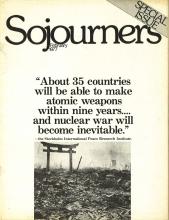As debates go, it wasn’t much--a couple of amendments to the bill authorizing funds for ERDA (Energy Research and Development Agency), one of the successors to the old Atomic E Commission. But for at least a few moments in 1975 and 1976, members of the House and Senate were asked to face reality on one of the more irrational aspects of U.S. foreign and military policy. Unfortunately, those who urged the amendments faced an insurmountable obstacle. They had facts to back up their position--but these were largely dismissed.
The facts were that the United States has developed an overwhelmingly powerful nuclear arsenal, far in excess of the needs of even the wildest Dr. Strangelove. But nuclear weapons production has continued. In recent years production of nuclear weapons has been estimated at more than a thousand a year, or three per day. Today, while the government refuses to disclose the number of U.S. weapons, officials do not dispute figures by the Washington Center for Defense Information, headed by Admiral Gene LaRocque (retired) that the United States has:
9,000 strategic weapons, ready to be fired from land-based missiles and submarines, or dropped from SAC bombers.
22,000 tactical weapons (shorter range, but sometimes more powerful), including 7,000 in Europe and 1,700 in Asia, including an estimated 600 in South Korea.
Read the Full Article

